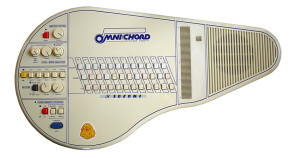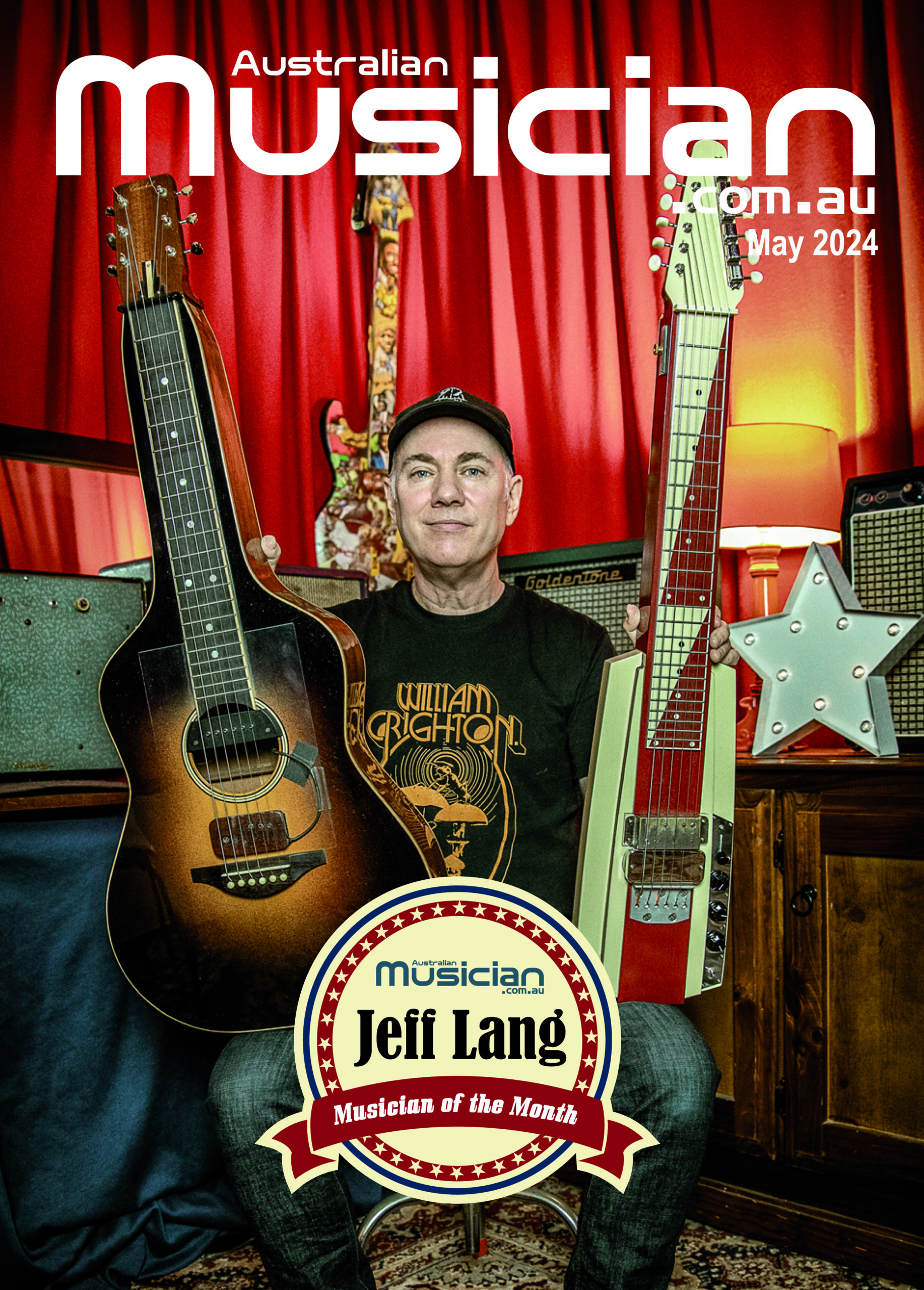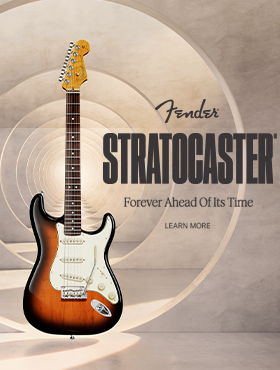 The 20th Century saw the greatest leaps forward in technological innovation that mankind has witnessed since Jesus sang lead for the Jerusalem rock band, The New Testament. The greatest beneficiaries of this innovation have been science and sport and, as a result, the musical instrument industry. Using this magnificent logic I am proposing that the Omnichord (descendant of the autoharp and Tronichord) be nominated as the most important musical instrument innovation since Samuel Whammy added his bar to a Gretsch White Falcon back in the 50s. The Omnichord is one of the instruments whose devotees, which include David Bowie, Brian Eno, Daniel Lanois, Jim Moginie and Jemaine Clement from Flight of the Conchords, refer to in reverent tones. Its appeal lies equally in its originality of sound and the inherent, endearing dagginess of the instrument from which it comes.
The 20th Century saw the greatest leaps forward in technological innovation that mankind has witnessed since Jesus sang lead for the Jerusalem rock band, The New Testament. The greatest beneficiaries of this innovation have been science and sport and, as a result, the musical instrument industry. Using this magnificent logic I am proposing that the Omnichord (descendant of the autoharp and Tronichord) be nominated as the most important musical instrument innovation since Samuel Whammy added his bar to a Gretsch White Falcon back in the 50s. The Omnichord is one of the instruments whose devotees, which include David Bowie, Brian Eno, Daniel Lanois, Jim Moginie and Jemaine Clement from Flight of the Conchords, refer to in reverent tones. Its appeal lies equally in its originality of sound and the inherent, endearing dagginess of the instrument from which it comes.
This oddly guitar/keyboard shaped lump of moulded plastic and electronics is certainly one of the most interesting and easily played pieces of synth style technology available. The early models of the Omnichord (OM27 and OM36) featured 12 keys with major and minor 7th and augmented and diminished options. It was further developed over another few series’ (OM84 and Model 200)and went through a number of rejigs and redesigns which added effects, more voices and improvements to the rhythm modules. The end result was the Q Chord which is now sold as an educational tool, and is a brilliant synthesis of both an electric guitar and a keyboard that even drummers and entry level beginners can use to create melodic ideas.
It is widely regarded as the electronic bastard grandchild of the autoharp which is a stringed instrument that uses a series of dampers to mute unwanted notes, leaving the available ones to create a drone like effect. It contains both a section which will play automated drum patterns and another which controls the instrument voice, along with a four octave area known as the strumplate, which is the part of the instrument that separates it from any other ordinary synth style keyboard. The strumplate is the Omni/ Q Chord’s secret weapon. When the player runs their finger over the length of the strumplate, in conjunction with depressing a note that has been assigned a particular voice ( strings, organ etc) it overlays a synthetic sound that could be described as a cross between a kettle drum and an electric guitar. Jemaine Clement, who has been credited with the world’s largest collection of Omnichords, says of the strumplate that he likes ‘the feel of its bumpy metal under my fingers and the angelic sound of it. I think it’s passed off as just a quirky toy instrument but I find the sound of the strum actually quite beautiful’.
There is an additional section and one of it’s main components and selling points is a Song Cartridge that allows the user to play along with pre-programmed (but not included) classics such as Amazing Grace. However, for the purposes of this article I am going to disregard that section as it is designed for entry level musicians and play along purposes. My interest in it is as a songwriting tool and handy go-to instrument in the studio, not to sing along to Soul of My Saviour at the St Alban’s Annual Fete!
As a studio tool the Omni/Q Chords are enormously useful instruments. The simplicity of operation and instant nature of their preprogrammed sounds, without the requirement to dial in tones, means that it can be a quick option in determining the direction of overdubs. During the recording of Powderfinger’s latest album Golden Rule, we ended up using a Q Chord, in one way or another, on every song bar one. “Typically,” says Ian Haug of Powderfinger, “in a studio where we were surrounded by vintage gear of all types, along with the latest in studio and instrument technology, the combination of a Q Chord, plugged directly into a $40 tiny Fender Amp, recorded through the cheapest microphone that the studio had, we kept on finding the final missing ingredient that the song needed. The Q Chord has a knack of fitting in where it is needed.” The consensus amongst users seems to be that it has an unusual knack of filling a gap in tone or tune, without puttying it closed. It is a rare instrument that can anonymously fulfil that dual role.
“I love keyboards that don’t sound like keyboards,” says Jim Moginie, producer extraordinaire and former guitarist of Midnight Oil. “After hearing the sound on Dylan’s ‘Oh Mercy’, particularly ‘The Man in the Long Black Cloak’ I flipped. We went to Daniel Lanois’ (‘Oh Mercy’s producer) studio to record, in New Orleans. Kingsway, on The Esplanade in the French Quarter. He had a bunch of Omnis there. Some even had separate outputs having been modified by his brother Bob, it makes sense to treat the bass, strum and rhythm box sounds differently.”
“I drive people crazy in the studio with it, wanting to put it on songs needing that ‘extra something’. People look at me with a ‘you poor man’ expression when I produce it, but then agree wholeheartedly the thing fits right in when you listen. The sound blends, doesn’t draw attention to itself. It’s subtle, humble, textural.”
Jim continues “It adds ‘atmosphere’ without announcing what it is. It’s the strumplate that is pure genius … like an electric autoharp.
I have two… one has midi, and a melody mode so you can play monophonic lines, and the other has a wicked square wave tremelo on the strumplate sound. I’ve never found two omnichords exactly the same, I get the feeling they were always trying to perfect it/push the boundaries in the factory. It’s great with effects on it; the Eventide H3000 especiall for delay, through guitar amps and the like. The other thing I love i that it can be battery powered so it’s truly mobile, like an acoustic guitar. And the built in speaker makes it ‘campfire ready’ for those impromptu singalongs. Buyers beware though, check on ebay if you buy second hand that the batteries haven’t been left in and leaked into the circuit boards, because that’s ‘Omni death’.
I used it on some Oils stuff, the Redneck Wonderland album. It think it’s on ‘What Goes On’ in those wacky drum breaks playing with Rob. I used it a lot on my solo record ‘Alas Folkloric’ and ‘FuzzFace’ with Nick Launay too.”
For songwriting purposes the Omni/Q provides an alternative way to look at constructing chord patterns and progressions. As a songwriter it is easy to slip into habits that are borne of familiarity with your instrument. One advantage that the Omni/Q has is that it’s notes are laid out in a way that is unfamiliar to both the pianist and guitarist which inadvertently leads to invention.
“I wrote the tune to ‘Carol Brown’ on one. They’re great for coming up with chord progressions. It is very easy to try different combinations as the keys represent chords rather than single notes” said Clement.
Clearly, My Morning Jacket’s Jim James also used one to construct the bones of the second track ‘Touch Me I’m Going to Scream’ from their latest album Evil Urges. It’s a carefully constructed song that shows both how the Omni helps angular chord movements to sit nicely, but also how seamlessly it fits in with the sound of a rock band.
Neil Finn, universally applauded as one of the key songwriters of his generation says that it is an “instrument that responds to the whims and random wishes of the player, an intuitive, instinctive response is required, science and intellect not required … what a relief.”
An additional appeal of the Q Chord is that it costs only around $600 new and the Omnis that I came across on ebay range in price from $75-$600, depending on the model. I imagine that this is one of the reasons that it has such modest capabilities in terms of separating the sounds of the different modules. This is the common denominator that I have found in asking musicians what they think could be done to improve it. Clement says that he would like”’more control over the beats and the ability to drop out single drum sounds” and Moginie adds that “a mod for separate outputs would be nice’. Haug said that the ‘ability to save settings on it would save a lot of time and make it more versatile in the live environment.”
Other than that, people seem to be bursting with praise for it. Judging by the amount of people that have uploaded videos of themselves using one on You Tube, the Omni/Q Chord has a long and prosperous future.
David Bowie plays Paul Simon’s “America” on Omnichord


